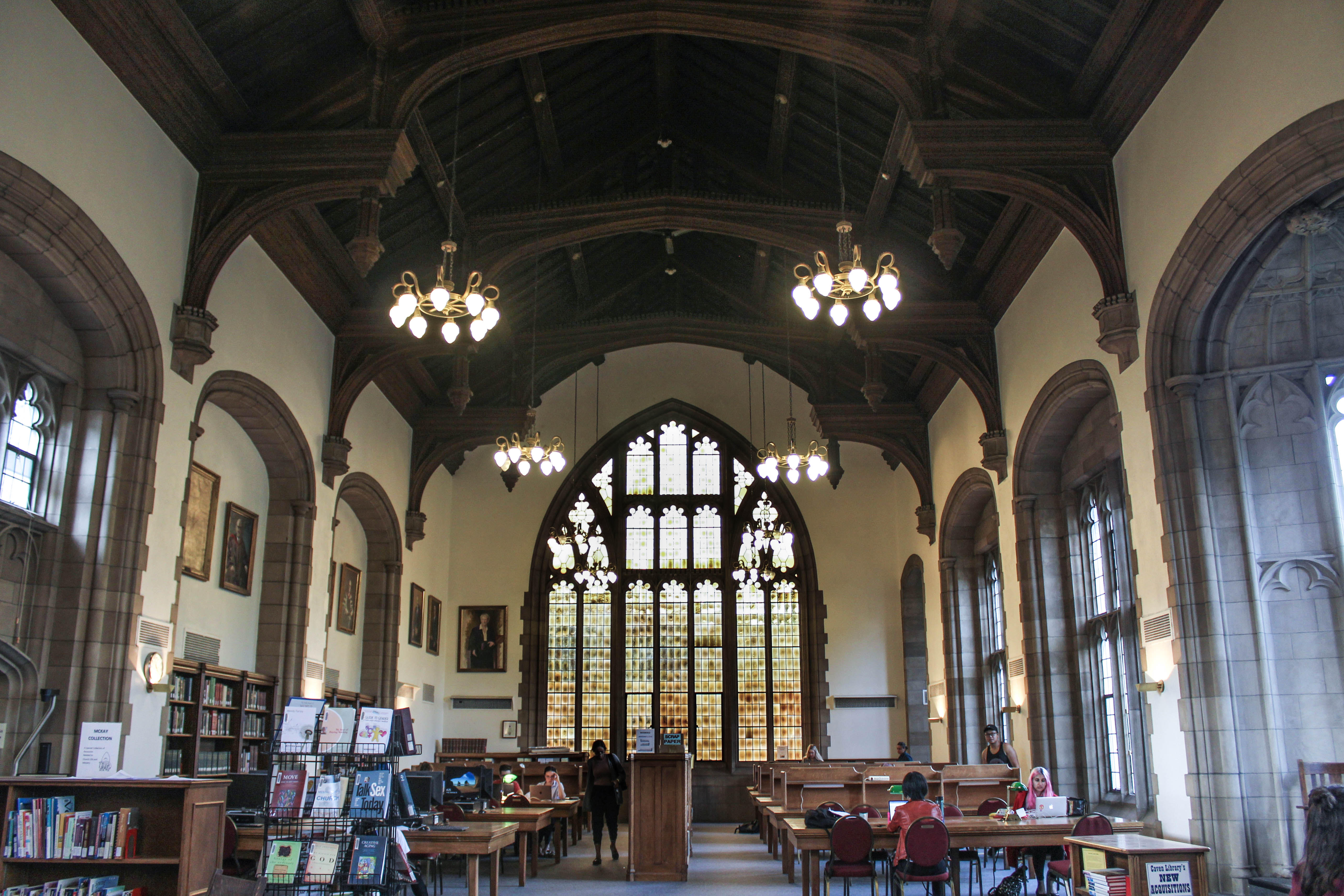How to U of T: Making the most of our libraries
Readings, research, and review sessions. Add Robarts to this list of R’s and you might be hesitant to learn any more about U of T’s libraries beyond their opening hours and which seats are most comfortable. However, with over 40 libraries available to you all across campus, knowing more about the ins and outs of our library services can support you in both your academic career and your leisure time.
Call numbers
Much like houses and buildings, books are assigned addresses, or call numbers, that determine their location in the stacks. When you search for a book in the catalogue or visit the stacks, look for the alphanumeric string listed next to the holding library or on the spine of the book—that’s the call number. Unlike geographical addresses in Canada, however, call numbers begin with the most general information and become increasingly detailed.
Generally speaking, the stacks at U of T are arranged according to general and specific subject classifications set out by the Library of Congress. These subjects correspond with a one or two letter code found at the beginning of the call number. For instance, American Literature is noted as PS within the P class of Language & Literature. These letters are followed by a numerical series that represents a specific topic; PS books falling between 8001-8599, for example, are considered Canadian literature and can be found in the same general area.
The next segment, separated by a period, focuses on the author’s last name and comes in two parts. While the first part is straightforward and follows the alphabet, the numbers that come after should be read in decimal order, rather than numerical as the subject code is read: A1234 precedes A24 which precedes A3. Depending on the books, further information regarding publication years and volume numbers may be provided at the end.
Course Reserves
At times, a selection of materials will be marked in the catalogue as ‘course reserves’ rather than in the ‘stacks’ or ‘checked out.’ Course reserves materials are set aside by instructors to give their students access to required or recommended class readings. That being said, course reserves can be borrowed by anybody with a valid U of T library card and can be retrieved from the course reserves section of the library or by request at the loan services desk. If you’re looking for the course reserves at Robarts, head to the Media Commons on the third floor.
The key differences between materials in course reserves and those in the stacks are the loan periods and fines. As short-term loans, course reserves can only be checked out for anywhere between one hour and seven days and cannot be renewed. Fifty-cent fines also accrue every hour after the time that the book is due, so be sure to return your reading directly to the circulation desk on time. For reference, undergraduate students can normally borrow up to 50 items for two weeks with up to five renewals for each item. Overdue fees for these works are fifty cents a day.
Requesting off-campus items
If the items you’re looking for aren’t available at any of the downtown campus libraries, don’t fear! You have a few options. For any items available at UTM, UTSC, and Downsview, you can make an intercampus delivery request and it should be available for you to collect from Robarts, Gerstein, or Kelly library within five days. If you choose to do this, keep in mind that your loan period begins at the time your request is made.
If what you’re looking for isn’t available through U of T Libraries, you can request an interlibrary loan (ILL) through the RACER portal. RACER allows you to locate books and articles at other universities and request either physical or scanned copies. Delivery times for ILLs are unfortunately less predictable and depend on the holding institution as well as the volume of requests being made.
Time for fun
Outside of leisure reads and comfy armchairs, the libraries also have tons of little gems to destress and socialize. Aside from course reserves, the Media Commons at Robarts is home to thousands of films and television shows that can be taken home for up to two nights or screened in the library’s theatre space. The Commons also stocks a variety of video games and board games, with a PS4 and XBoxOne console available for in-library play on a first-come, first-served basis.
For something a little more active and adventurous, escape rooms are regularly organized at Robarts and the Engineering & Computer Science library. Activity stations are also set up at some libraries, offering puzzles, colouring pages, and cookie decorating to those looking for a break or a reason to procrastinate. Exam period will also see the return of therapy dogs at certain libraries, including Gerstein’s mainstay Bella.
For those of you who like to learn new things in your time off, consider attending a workshop or two. From 3D printing and coding in R and Python, to research and writing seminars, entrepreneurial guidance and more, these sessions give you the chance to develop skills that you might not explore in your academic programs or that you’d like to brush up on specifically for school. Low stakes and open to all, these workshops are a great way to take a break while staying engaged.
While this list is admittedly meager with just four highlights, the libraries at U of T are a treasure trove of information, entertainment, and some honestly cozy spaces and stunning views. There’s more to these libraries than silent reading rooms in Robarts—you just need to know where to look.
